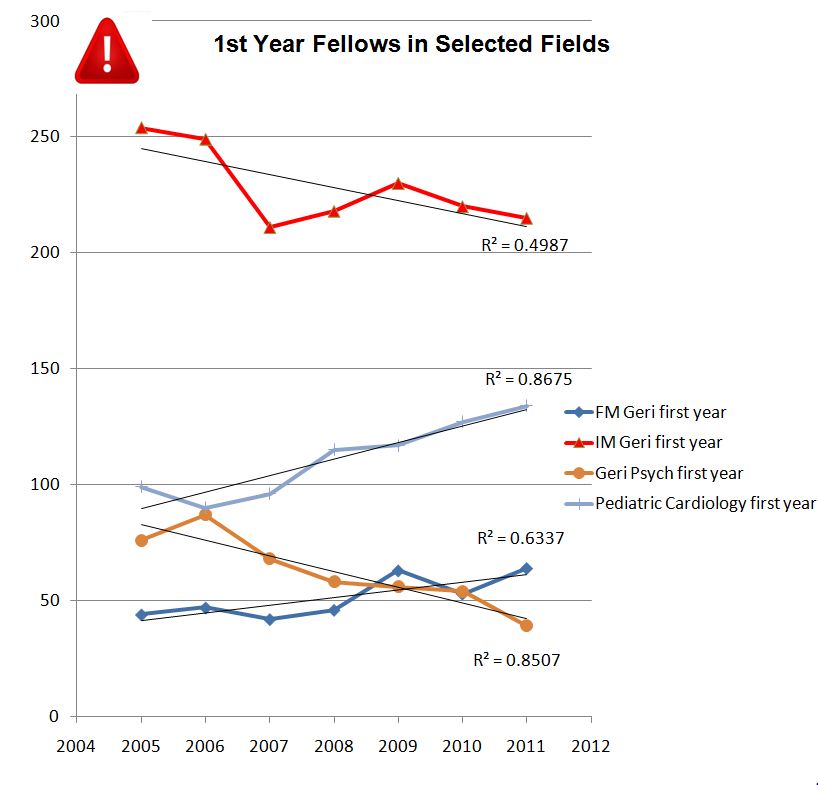It's September again, which for most means falling leaves, the end of vacations, and kids returning to school. For those interested in medical education, it also means the annual special issue on the topic in the Journal of the American Medical Association.
I always turn directly to the charts at the back showing the number of trainees in the various specialties of medicine. "Geriatric" appears in three places—as specializations within internal medicine, family medicine, and psychiatry, and their numbers have never been large. And that's probably okay.
Given that it's been clear for over a decade that we won't ever have the geriatrician workforce needed to deliver care directly to the older adults who could benefit, our notion has long been that we have to mainstream geriatrics expertise into all physicians. Therefore, our interest in geriatric specialists focuses on their potential as educators, researchers, and leaders of that mainstreaming process rather than as a clinical workforce . Nonetheless, those geriatricians (in internal medicine, family medicine, or psychiatry) represent the raw material for faculty development and a critical resource.
And even in this context, the situation remains grim. I know I've kvetched about this before (see "The Operation Is a Success but the Patient Has Died"), so this time I thought a picture could replace some of the words and help clarify the situation. I'm no Charles Blow, the New York Times "Op-Chart" graphic editorialist, but here's my best:

Each colored line represents the number of trainees in the first year of fellowship in each of the last seven years. For each series, there is a best-fit straight line superimposed along with the R2 which indicates how well the line fits the data on a scale from 0 (not at all) to 1.0 (perfectly straight). You can see that the lines slope down for geriatrics in psychiatry and internal medicine, while it slopes up just slightly for family medicine.
As a contrast, I arbitrarily chose pediatric cardiology. You can see that the growth of that field has been remarkably consistent and steady. While there were the same number of geriatric psychiatrists and pediatric cardiologists in 2006, I think it's pretty clear that those trend lines will never meet again. By my estimate, the number of first year geriatricians from internal medicine will be exceeded by the number of pediatric cardiologists well before 2020.
Now that I’ve been working on my graphing skills, does anyone have any requests for additional comparisons that might shed light on the problem and suggest solutions? We would welcome some fresh ideas.
